Sony raises the bar: We talk with Sony’s top lens designer about what makes their latest lenses so special
posted Thursday, February 4, 2016 at 12:28 PM EDT
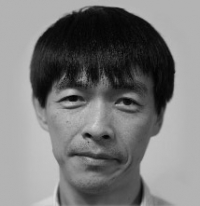
Distinguished Engineer
Opto Design Department, Core Technology Division, Digital Imaging Business Group
Sony's three new FE-series (full-frame E-mount) lenses promise a new level of optical performance, both in terms of sharpness and resolution as well as in producing beautiful bokeh. In the general presentation for these lenses (see a recording of our live stream of the event here), mention was made of several new technologies that made the dramatic step in lens quality possible.
The three technologies named were "XA" (Extreme Aspherical) lens elements, a new fabrication process for aspheric elements that eliminates bokeh bugaboos like the very distracting "onion-ring" bokeh, and a new optical modeling/simulation technology that's enabled Sony's engineers to evaluate a lens design's bokeh performance without having to fabricate a physical model to test.
As part of the rollout event, I had a rare opportunity to talk for a bit with Sony's head lens designer, Mr. Motoyuki Ohtake. Mr. Ohtake's title is Distinguished Engineer, Opto Design Department, Core Technology Division, Digital Imaging Business Group. Full Japanese business titles are always a mouthful, but this is the first time I've seen "Distinguished Engineer" on a business card. With over 200 patents to his name, Mr. Ohtake is without question a distinguished engineer! I asked about his career path, and it turns out he worked for Nikon for many years, then came over and joined Sony around 10 or so years ago. At Sony, he first worked on lens designs for camcorders and professional video cameras, as well as some of Sony's point & shoot cameras at the time, but later decided he wanted to shake up the interchangeable-lens business a little, so has been heading Sony's ILC lens design efforts for a while now.
This won't be a normal question and answer interview, as our conversation was pretty far-ranging, so I'll instead just share some observations and notes about what we discussed.
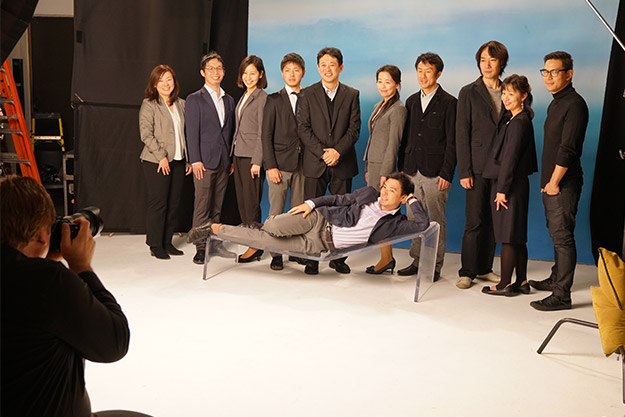
Onion rings begone! Sony's new aspheric molding technology
Aspheric lenses are key to making compact, well-corrected modern lenses, but they often bring a trade-off with them in the form of ugly-looking bokeh (the way out of focus objects are rendered). Modern aspherics are made by a molding process, where by glass blanks are pressed against tungsten molds at high temperature and pressure. The heat-softened glass deforms to take the shape of the mold, allowing aspheric lens elements to be cranked out in production-line fashion. The catch is that the way the molds are made tends to produce small ridges on the resulting lenses, which produces an unattractive form of bokeh. (If you're interested in the details, check out our in-depth article from 2014 on so-called onion-ring bokeh and how Panasonic has come to grips with it.)
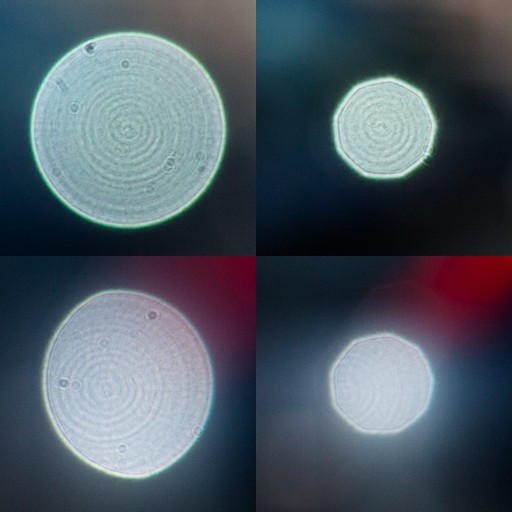
(Photo courtesy Paul van Walree, used with permission.)
Sony's approach to eliminating the problem was to design and build their own mold-making machine, one that allows creation of aspheric lens molds that don't have the previously-characteristic ridges present in the first place. Lenses produced from such molds have a surface roughness of only 0.01 microns. That's a factor of 2 or 3 better than current technology used by the rest of the industry. Because they are so incredibly smooth right out of the micro-lathe machine, it's a much more production-oriented process than the manual polishing approach Panasonic developed. This should translate into lower production costs, and ultimately, more Sony lenses at modest price points able to take advantage of the technology.
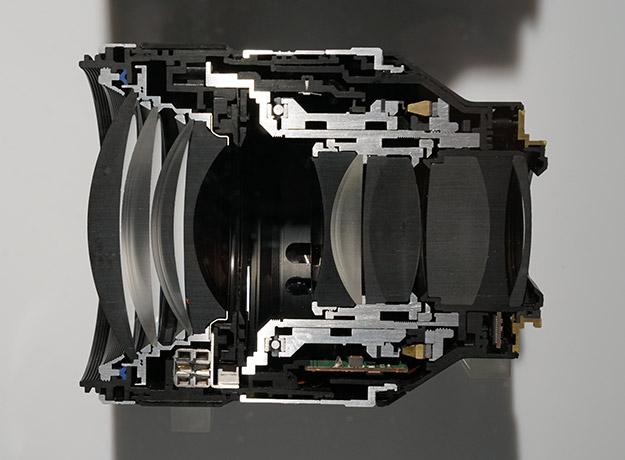
It's an interesting side note that the ultimate design of the 85mm f/1.4 G-Master lens had to wait for this new aspheric technology to be deveoped before the design could be completed. Wanting beautiful bokeh, the lens designers could see no other alternative to using conventionally-polished aspherical lens elements to build it with. The problem is that would have made the lens huge and heavy, with a very complex optical formula. What was needed was aspheric technology that could avoid the onion-ring problem from the get-go, so the lens designers had to wait until the lens-fabrication people could solve the surface-finish problem. All told, the combination of surface finish and extreme-molding capabilities took 3 to 4 years to develop.
Extreme Aspherical elements for more compact, higher-performing lenses
The vagaries of the glass-molding process used to create aspheric elements impose certain limitations on the kinds of lens profiles that can be created. While the idea of pressing heat-softened glass into a mold seems simple on the face of it, getting the lens into the shape you want turns out to be enormously complicated. First, when you heat up the mold to glass-softening temperatures, it's going to change dimensions slightly. So you need to fabricate the mold to have the shape you want it to have when it's not at room temperature.
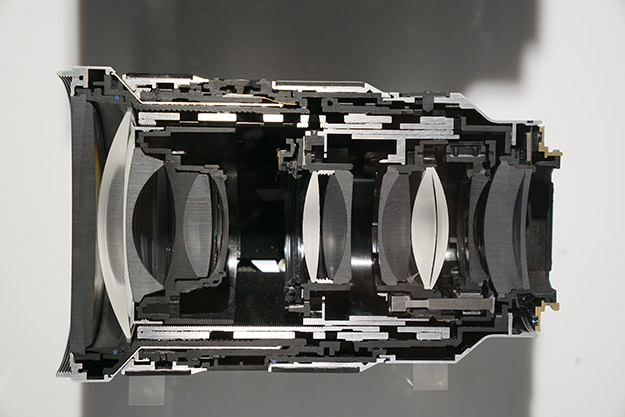
That's the least of your problems, though; the behavior of the glass itself is a much bigger issue. Glass not only expands when heated and contracts when cooled, but it remains viscous over a fairly broad range of temperatures. It does eventually become completely rigid, but thermal contraction can change the shape of the lens across a range of temperatures, as the hot glass cools after it's been pressed into shape. Thicker parts of the lens will cool more slowly and shrink more than thinner sections, and the resulting stresses can pull the lens element into a different shape than you intended. (Thanks to reader Arashi, for pointing out that I was mistaken when I previously referred to glass as a supercooled fluid that will flow over long periods of time.)
Computer-aided design programs can model this behavior to some extent, but it's an inexact science, and lens molds often have to be tweaked once or twice from the originally-designed shape to get the final results you want. Some lens shapes have been just too difficult to deal with, though, in terms of the maximum amount of curvature, the maximum ratio between the thickest and thinnest parts of the lens, etc.
While the details and even the extent to which normal design constraints have been overcome are proprietary, it seems that Sony has significantly reworked the molding process itself, to give them much greater latitude in the range of lens profiles they can produce. This increased capability is apparently an important part of these new lenses' improved optical performance.
New modeling software supports "design for bokeh"
Sony made quite a big deal in their rollout presentation that the new G-Master lens lineup would be about both high resolution and excellent bokeh. The thing is, it's generally been difficult or impossible to know what a new design's bokeh would look like without actually building a sample and taking pictures with it. That's obviously a slow and very expensive process, so lens designers were very limited in their ability to iterate their designs to improve bokeh characteristics.

A7R II: 85mm, f/1.4, 1/125s, ISO 125, -0.7EV
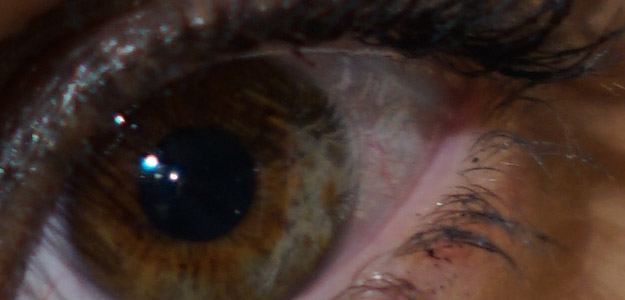
The defining characteristic for bokeh is the brightness profile as you move from the center of an out-of-focus highlight towards its edges. Smoothly-varying profiles tend to look better, although there's some difference in taste between photographers whether they prefer relatively hard-edged profiles (big round dots from small highlights) or more soft-edged ones (big fuzzy dots).
Mr. Ohtake said that one of the very first things they had to do was to come up with a numerical characterization or score for what good bokeh looked like. This apparently involved showing a huge library of images to a large group of people, and tallying how people felt about different-looking bokeh examples. This information was reduced to an automatic scoring algorithm that closely matched the average scores of the human subjects. Once they had a closed-form formula for scoring bokeh, they were ready to proceed with their bokeh-modeling system.

One of the tricky things about bokeh is it's so crazy-complex. Bokeh can look completely different if the lens is focused at 1 meter and the background objects are at 4 meters than it will if the subject is at 10 meters and the background is at 40 meters. A lens that looks good under relatively close-focus conditions and with background elements in the near distance may perform poorly at the same subject distance and aperture if the background elements are more distant. (In fact, I'm pretty sure it was a Sony point & shoot lens that I observed this specific behavior on a few years back.)
So bokeh characteristics can change radically with focal distance and subject-to-background distance. Now multiply that by the range of focal lengths in a zoom lens, and you get some idea of why it's been so difficult to design for bokeh in the past. Add to this that most lens-design software is designed to analyze lens behavior for subjects located on the plane of focus, and the task becomes almost hopeless.
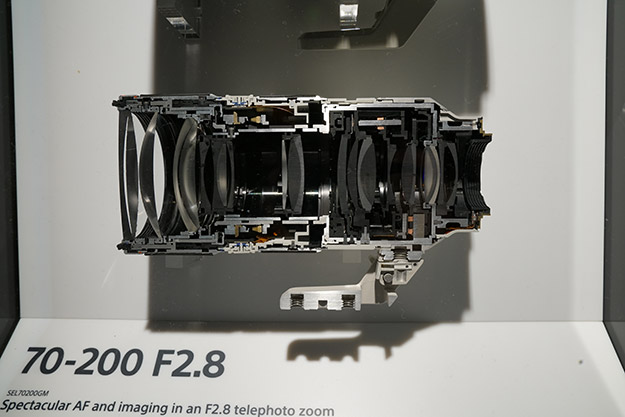
What Sony did was twofold: They first created analysis software that could produce bokeh intensity profiles for any combination of focal distance and background/foreground distance. They then coupled the output of this program to the input of their bokeh-evaluation algorithm, so they could get a "score" for bokeh quality at any particular combination of distance settings. From there, it was a matter of telling the analysis software to step through a full range of subject and background/foreground distances for each focal length, generating a map of bokeh score vs the other parameters.
This let them for the first time see particular combinations of distances and focal lengths that produced bad-looking bokeh, which then allowed them to focus their efforts on just those problem areas. They could tweak a design, run the analysis suite again, and see not only whether things had improved or worsened in the area they were concerned about, but also whether those changes caused problems to crop up elsewhere. Iterating lens designs for better bokeh is now a matter of tweaking the design, running the software, seeing what got better or worse, and then making another tweak. Not only do they not have to build a prototype lens to evaluate bokeh, they also don't have to shoot hundreds of test photos with all the subject-background/foreground combinations, in order to see what's happening.
As an engineer myself (MSEE/Applied Physics, although none of it used for decades now), I always find it fascinating to hear from other engineers how they overcame problems, solutions or techniques they found, and just generally how products and technologies evolve. I hope this peek behind the scenes at Sony's latest lens technology has been equally interesting to you, our readers :-)